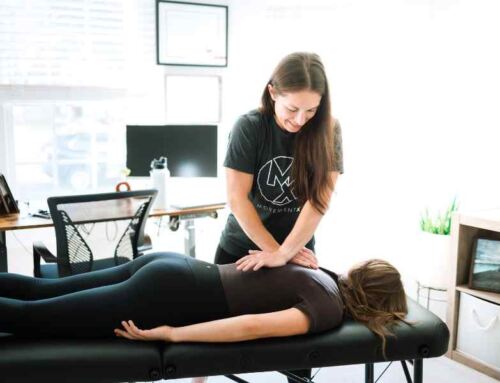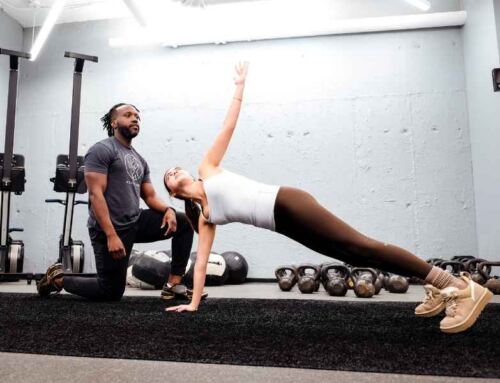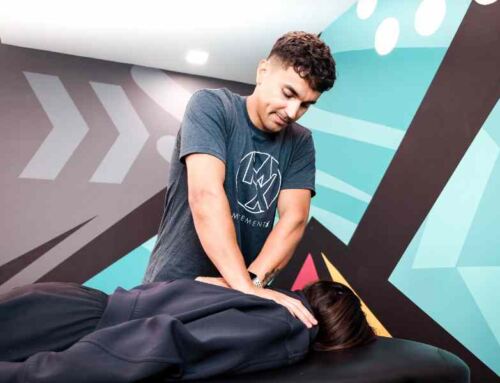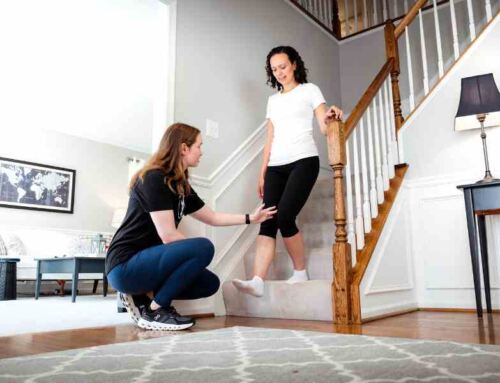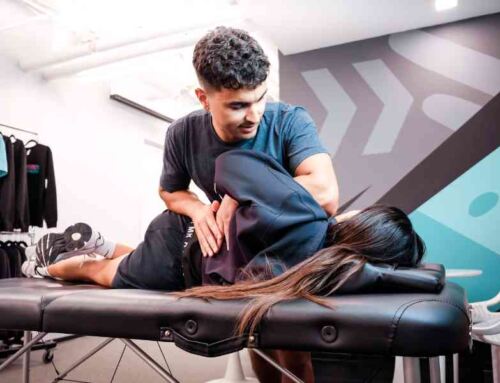Over the years, I’ve worked with a wide range of people—some formally diagnosed with hypermobility, others who just struggled with motor control, chronic pain, or that nagging feeling that lifting “shouldn’t feel this weird.”
The common thread?
Once we shifted the focus from chasing range or pushing through discomfort to prioritizing control, positioning, and proper muscle engagement—their bodies responded.
Pain decreased. Confidence went up. And movements that once felt sketchy or unstable started to feel strong, grounded, and safe.
Strength training doesn’t have to be painful or intimidating—even if your joints tend to do “extra.”
With the right form, thoughtful progressions, and a focus on active stability, you can train in a way that feels good now—and supports you for the long haul.
For the hypermobile person, strength training can feel unsettling, uncomfortable, or even painful—despite best efforts and clean intentions. This isn’t about weakness or lack of motivation. More often, it’s a deeper issue: a lack of stability and motor control.
“I feel wiggly when I lift.”
“My knees and elbows feel like they might snap backward.”
“I keep getting low back pain after lifting—even with light weights.”
These exercises are designed with your body in mind—where joint control, core strength, and slow, mindful engagement matter more than speed or load. They’re also the same drills I’ve used successfully with clients who struggled with pain, instability, or that frustrating feeling of being “tight” all the time.

Core Brace (Lying Down or Standing)
- Lie on your back with knees bent (or stand tall, feet hip-width apart)
- Gently draw your ribcage down and brace like someone’s about to poke your belly
- Hold steady, breathe normally—feel firm, not rigid
I’ve seen this simple drill completely change how someone feels during their lifts. That awareness of midline control can make squats, deadlifts, and even daily movements feel more stable and less painful.
Wall Squat Hold
- Slide down into a wall squat with knees at 90°
- Press evenly through your feet, engage glutes and core
- Stay active—don’t just “sit” in it
Many clients notice that once they build tension purposefully, their knees stop snapping back and their hips feel more supported.
Glute Bridge Hold
- Hips lifted, spine neutral (no low back arch)
- Squeeze glutes and hamstrings—not your low back
- Keep ribs and pelvis aligned, breathe steadily
I can’t tell you how many clients have said, “I thought I was tight, but I didn’t realize I was just tense from trying to stay upright.” Once they learned how to build true core and joint control, the “tightness” started to fade—without a single stretch.
These drills don’t look fancy—but they’re incredibly effective. When done consistently and with good attention to form from the right professional, they help hypermobile and motor-control-challenged bodies feel grounded, strong, and safe.
Get Professional Support Early
If you’re experiencing this kind of instability or discomfort, one of the most effective first steps is to work with a physical therapist—especially someone trained in motor control and movement assessment. A knowledgeable PT can:
- Identify faulty movement patterns or compensations
- Assess your joint stability and neuromuscular control
- Build a customized plan that improves strength safely and sustainably
This kind of guidance helps you feel more in control and less frustrated—while reducing injury risk and promoting long-term confidence.
Why Hyperextension Happens
Hypermobile bodies tend to “fall” into the range that’s most available—typically the end range of a joint. That’s why you often see:
- Elbows locking too far back during push-ups or overhead presses
- Knees snapping backward in squats or lunges
- Lower back arching excessively in bridges, deadlifts, or overhead movements
This isn’t just poor form. It’s your body’s automatic compensation for a lack of muscular support and positional awareness.
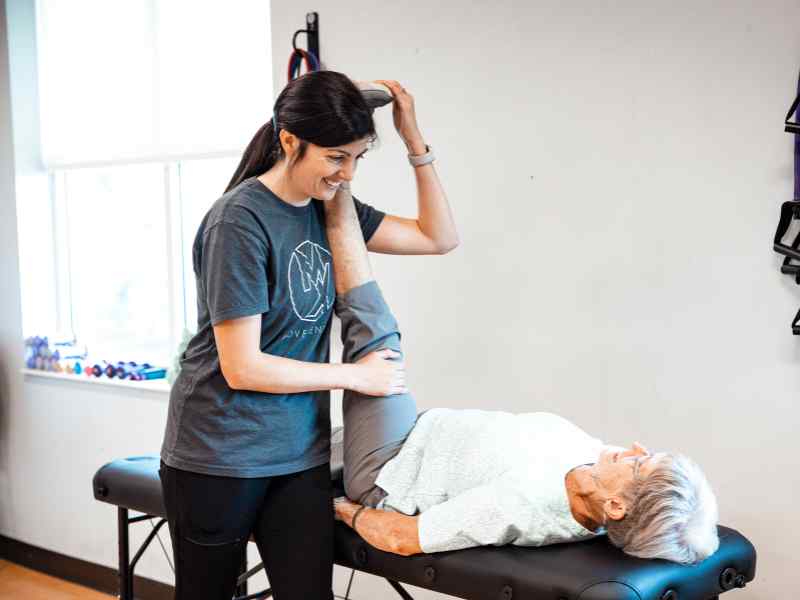
But Why Do Hypermobile People Often Feel Tight?
It’s common for hypermobile individuals to say they feel “tight” or full of muscular “knots,” even though they have more flexibility than average. This tightness isn’t a sign that you’re stiff—it’s your muscles working in overdrive to create stability for joints that move too freely. Without proper motor control and coordination, muscles have to constantly contract to protect unstable joints, often leading to fatigue, trigger points, and that nagging sense of tightness.
What your body really needs isn’t more stretching—it’s better control and stronger support throughout your range.
Final Thoughts
Whether you’re managing hypermobility, struggling with pain, or just feel like your workouts aren’t quite working for your body—you’re not alone, and you don’t have to navigate it by yourself.
If your current routine isn’t helping you feel stronger, more stable, and more in control, it might be time for a smarter, more personalized approach.
At MovementX, we believe that everyone deserves to move with confidence and strength—without pain or fear of injury. With the right guidance, your body can feel more capable, more resilient, and more supported.
Reach out to me in the Knoxville area to get started. Let’s redefine what strength, stability, and recovery can look like—together.
https://www.ehlers-danlos.com/directory/ashton-grimm/
References
- Zabriskie HA. Rationale and Feasibility of Resistance Training in hEDS/HSD: A Narrative Review. J Funct Morphol Kinesiol. 2022 Aug 20;7(3):61. https://pmc.ncbi.nlm.nih.gov/articles/PMC9397026/
- Luder G, Aeberli D, Mebes CM, Haupt-Bertschy B, Baeyens JP, Verra ML. Effect of resistance training on muscle properties and function in women with generalized joint hypermobility: a single-blind pragmatic randomized controlled trial. BMC Sports Sci Med Rehabil. 2021 Feb 8;13(1):10. https://pmc.ncbi.nlm.nih.gov/articles/PMC9397026/
About the Author
Dr. Ashton Grimm is a physical therapist and certified Orthopedic Specialist in Knoxville, Tennessee. Among Ashton’s treatment specialties are orthopedics, sports, neurologic, geriatrics, and vestibular conditions. Dr. Ashton works with a wide range of individuals, from athletes and runners to working moms, active grandparents, and young professionals, helping you stay mobile, independent and pain-free.



